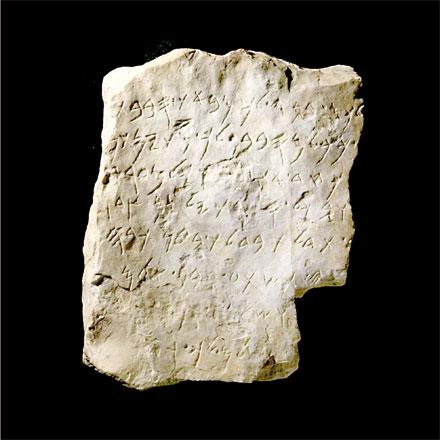
Mythology Studies: About Ammonite's Forgotten Gods
Milkom, the supreme deity of the Ammonites, was closely associated with their rulers. Stone sculptures of Milkom have been found in Amman and throughout the kingdom, which extended from the Yarmouk River in the north to the Mujib Canyon in the south.
However, the borders of these Iron Age statelets were not strictly defined. In the Iron Age Levant, monumental inscriptions often featured kings, with deities mentioned as supporters of the king's activities, particularly in military campaigns and building projects.
"Texts from the Bible identify Milkom as 'the god of the Ammonites'," noted Professor Craig Tyson from D'Youville University in Buffalo, adding that another deity, Ba'al, is known from three Ammonite inscriptions.
The Amman Theatre Inscription is a small basalt fragment with two broken lines of text dated to around 600 BC, a part of a longer inscription, perhaps meant for display.
"The first partial line of the text has the name Baʿal, followed by what is probably the verb, 'I will build.' Given the tiny amount of preserved text, it is not possible to say much about the inscription other than to discuss the individual words. It does seem significant though that the name Baʿal appears on the type of inscription that would normally record kingly deeds," Tyson elaborated.
Another piece of evidence is a seal found at Tell ʿUmayri (a site near the Airport Road) that reads,“[Belonging] to Milkomʾor, servant of Baʿalyasuʿ.”
"The name of the person served -Baʿalyasuʿ- is most likely the king of the Ammonites. His name means, 'Baʿal is salvation' or 'Baʿal has saved.' That a king would have a Baʿal name does not mean that Baʿal was necessarily closely connected to kingship in Ammon," Tyson explained.
On the other hand, someone among the Ammonite elite saw Baʿal to be important enough to invoke him in their child's name. The last provenance inscription that includes the name Baʿal again comes from Tell ʿUmayri, this time in the form of a seal impression on a jar rim.
"The script on the inscription is likely Aramaic and dates to the late sixth or early fifth century BC. The first line has the name Baʿal and the second line only contains the first two letters of a word. The two lines may be taken together as one name breaking over two lines, but whatever the case, the Baʿal part is clear," Tyson underlined, adding that if we assume it is part of a personal name, it provides one more bit of evidence for the worship of Baʿal in the region.
Ba'al was a known deity in the ancient Near East and was related to solar cults. His name means the lord, owner.
"The Ugaritic texts from Ras Shamra on the coast of Syria [14th – 13th centuries BC] provide the most robust portrayals of Baʿal and his various roles in kingship, fertility of the land via his control of the weather, and control over the sea, which was so important to seamen," Tyson said, noting that it would not be surprising to find that Ammonites and their rulers included Baʿal among the gods that they looked to for protection and sustenance.

Legal Disclaimer:
MENAFN provides the
information “as is” without warranty of any kind. We do not accept
any responsibility or liability for the accuracy, content, images,
videos, licenses, completeness, legality, or reliability of the information
contained in this article. If you have any complaints or copyright
issues related to this article, kindly contact the provider above.


















Comments
No comment